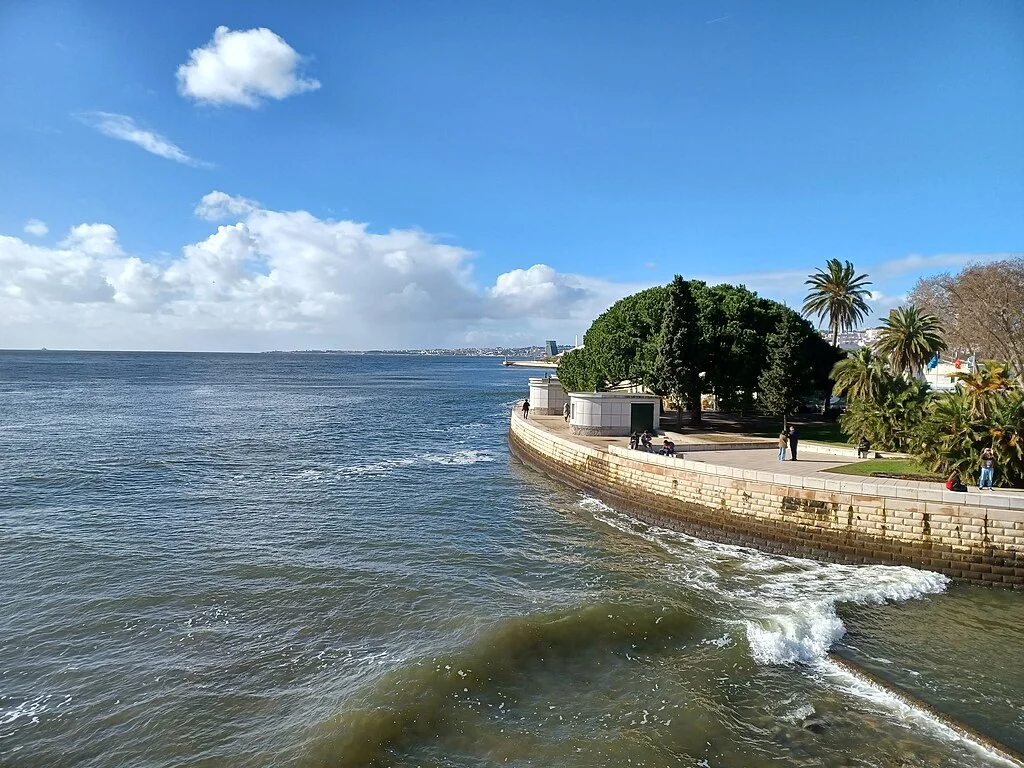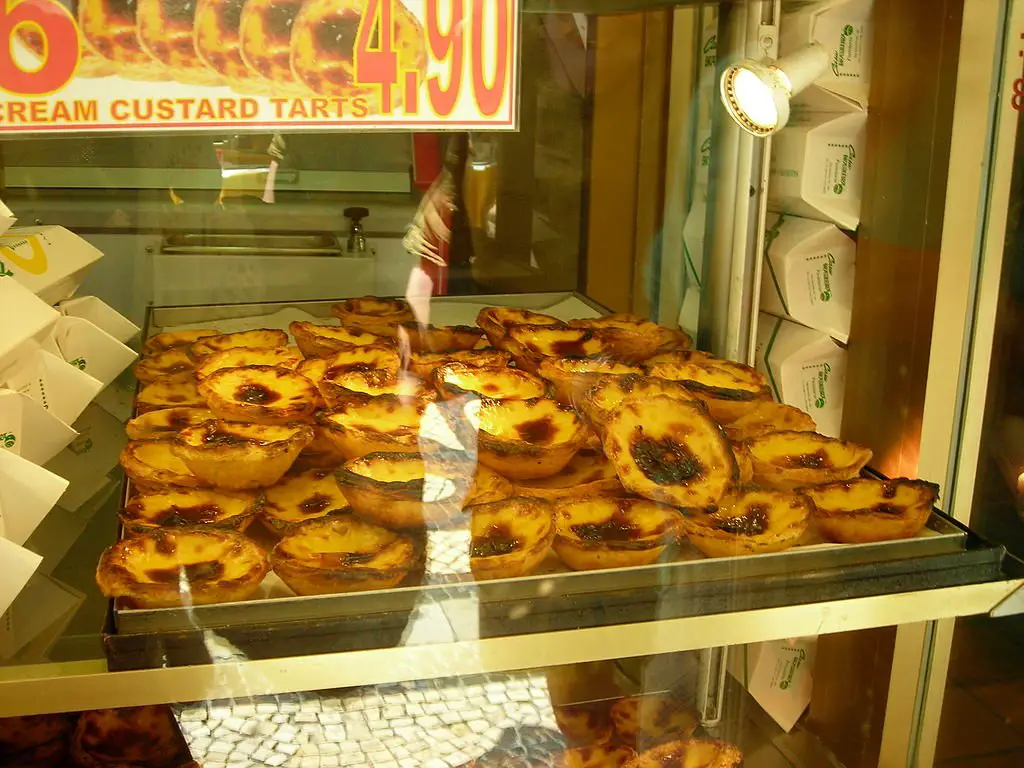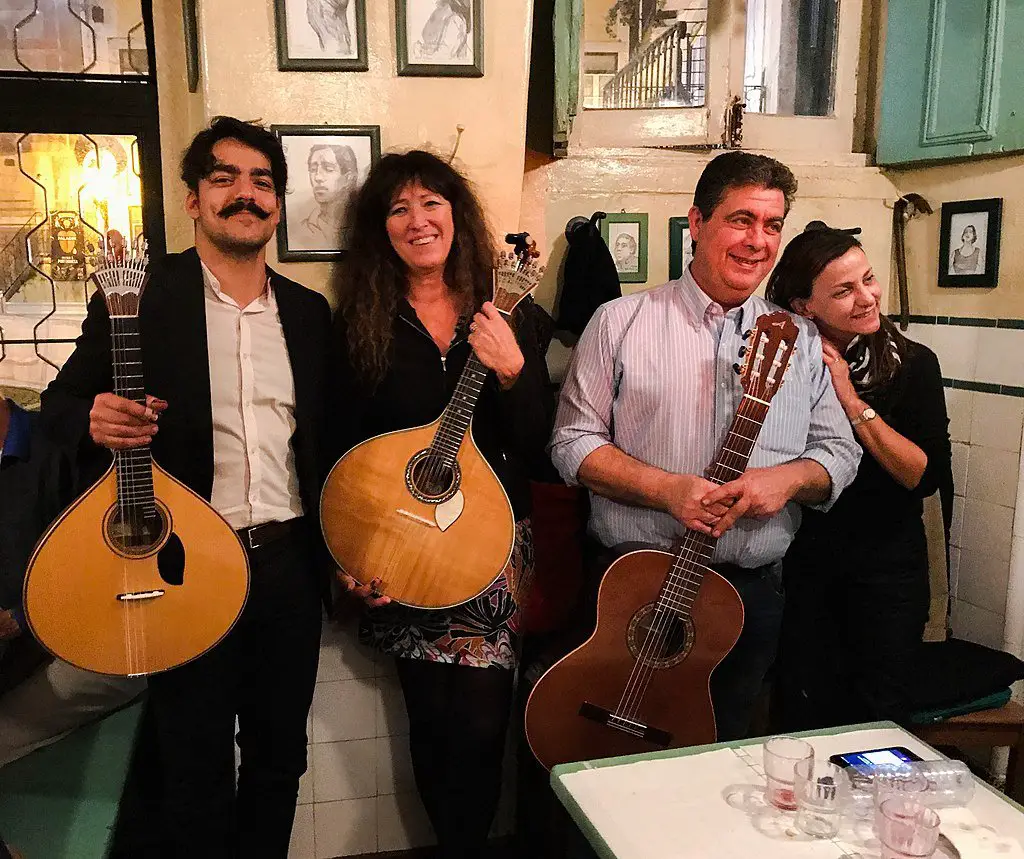Introduction to Lisbon’s Charm
Lisbon, the capital of Portugal, is a city that effortlessly marries its vibrant history with modern culture, creating a unique charm that captivates both locals and visitors alike. This picturesque metropolis is punctuated by remarkable architecture, ranging from its ancient castles and palaces to contemporary structures that represent its growth and innovation. Lisbon’s streets, adorned with colorful tiled facades, tell tales of a rich past while inviting exploration and discovery.
The city’s diverse neighborhoods each possess their own distinct character, contributing to Lisbon’s reputation as one of the most enchanting cities in Europe. Areas such as Alfama, with its winding alleyways and traditional Fado music, or the vibrant Bairro Alto, known for its nightlife, showcase the eclectic blend of tradition and modernity. Visitors can indulge in the warmth of local hospitality, while experiencing a cultural landscape that seamlessly intertwines the old and new.
Culinary experiences in Lisbon are an integral part of its allure, offering a delightful journey through a variety of flavors and ingredients. Traditional Portuguese cuisine is celebrated alongside a rising trend of contemporary gastronomy that has emerged in recent years. From fresh seafood dishes to decadent pastéis de nata, the city is a haven for food enthusiasts seeking to savor authentic tastes that reflect its maritime heritage and cultural diversity.
Furthermore, the iconic yellow trams that traverse the city’s hilly terrain are more than just a means of transportation; they symbolize the spirit of Lisbon. These historical trams not only connect various neighborhoods but also offer a unique perspective of the stunning vistas that characterize Lisbon’s landscape. Thus, the tram system stands as an essential aspect of experiencing the city’s charm and navigating through its enchanting streets.
The Iconic Tram 28: A Journey Through History
Tram 28 is not just a mode of transport in Lisbon; it is a symbol of the city’s rich history and vibrant culture. This iconic tram line takes passengers on a scenic journey through some of the most picturesque neighborhoods of the capital. Starting at Martim Moniz, Tram 28 winds its way up the steep hills, providing breathtaking views and a glimpse into the past.
The historical significance of Tram 28 dates back to 1914 when it was first introduced to cater to the growing number of residents and visitors. Its route covers several historical districts, including Graça, Alfama, and Bairro Alto, allowing passengers to witness the architectural beauty and cultural heritage of Lisbon. As the tram rattles through narrow cobbled streets, the atmosphere comes alive, with the sounds of laughter, chatter, and the clanging of the tram bell accompanying the ride.
While locals utilize Tram 28 as a practical means of commuting, tourists often hop on to experience the charm of an authentic Lisbon attraction. The tram, with its vintage wooden interior and yellow exterior, captures the essence of the city. Riders can enjoy an immersive journey past landmarks such as the majestic Sé Cathedral, the enchanting Miradouro da Graça viewpoint, and the bustling Mercado da Ribeira. Each stop on this historic route reveals a facet of Lisbon’s diverse character.
Moreover, riding Tram 28 provides an opportunity to discover the culinary delights that Lisbon is famous for. Many passengers alight at various points to indulge in local delicacies, from traditional pastéis de nata to hearty bacalhau dishes. This blend of transportation and gastronomy further elevates the experience, making Tram 28 a vital part of Lisbon’s cultural tapestry.
Exploring Alfama: The Soul of Lisbon
Alfama, the oldest district in Lisbon, is a labyrinth of narrow, winding streets that exudes a timeless charm and rich history. As one meanders through its alleys, the heart of the neighborhood reveals itself, showcasing traditional architecture and an ambiance steeped in culture. The deep Moorish influences are evident in the design of the buildings, with many featuring intricate tilework and balconies adorned with flowering plants. Each corner turned in Alfama offers an opportunity to discover hidden squares and local artisans, preserving the character of this beloved district.
One cannot speak of Alfama without mentioning Fado, the soulful music that echoes through its streets. The sound of a mournful guitar accompanied by the poignant vocals carries the essence of the neighborhood. These intimate performances can be experienced in taverns and local venues, where the passionate expressions of nostalgia and longing resonate deeply with visitors and locals alike. For those wanting to immerse themselves in this cultural treasure, an evening in Alfama is a must, providing not only a musical journey but an authentic taste of life in Lisbon.
Visitors are encouraged to explore Alfama on foot, as this mode of transportation allows them to uncover its secrets at a leisurely pace. A recommended walking route could begin at the iconic Castelo de São Jorge, providing panoramic views of the city. From there, one can meander down the hills, passing by the beautiful Miradouro de Santa Luzia, where stunning vistas frame the Tagus River and the terracotta rooftops. Each step along the cobbled pathways invokes a sense of connection to Lisbon’s storied past, making the exploration of Alfama not just a stroll but a remarkable journey through time. With its charm and vibrant culture, Alfama undoubtedly represents the soul of Lisbon, a place where history and tradition come alive.
Local Eateries: A Taste of Lisbon
Lisbon is renowned not only for its charming cobbled streets and historic trams but also for its rich culinary scene that delights both locals and visitors alike. When exploring the local eateries, one can find a mix of casual and upscale dining experiences that showcase authentic Portuguese cuisine.
One must-visit casual spot is Time Out Market located in the trendy Cais do Sodré area. This vibrant food hall hosts a variety of food stalls run by the city’s top chefs and culinary talents. Guests can savor traditional dishes such as Bacalhau à Brás (a codfish dish), or Pastéis de Nata (custard tarts) – a must-try when in Lisbon. The energetic atmosphere and the diverse selection make it an ideal place for those looking to sample a variety of flavors in a single visit.
For a more upscale experience, Belcanto, led by the renowned chef José Avillez, offers a remarkable dining adventure in the heart of Chiado. This Michelin-starred restaurant presents contemporary twists on classic dishes. The tasting menu is highly recommended, allowing diners to explore exquisite plates such as oysters with green apple granita and slow-cooked lamb that exemplify Portuguese culinary traditions with modern flair. Reservations are advisable due to its popularity.
Another gem is A Cevicheria, a small eatery famous for its innovative take on ceviche. While it draws on Peruvian influences, the incorporation of local ingredients sets it apart. The ambiance is lively, making it perfect for a casual lunch or dinner. Don’t miss their signature dish, the ceviche with passion fruit, which highlights the fresh seafood available in Portugal.
Embracing the local food scene in Lisbon allows visitors to experience the warmth and richness of Portuguese culture. By exploring these eateries, one can unlock a treasure trove of flavors, ensuring a memorable culinary journey through this enchanting city.
Savoring Pastéis de Nata: A Sweet Tradition
Among the many culinary treasures that Lisbon offers, Pastéis de Nata stands out as a symbol of the city’s rich gastronomic heritage. These creamy, custard-filled pastries originate from the 18th century and were inspired by the monks of the Jerónimos Monastery in Belém, who created a custard recipe to utilize leftover egg yolks. Over time, this delightful treat gained popularity and became an integral part of Portuguese cuisine, particularly in the capital city.
Visitors to Lisbon often seek out the best places to savor a freshly baked Pastéis de Nata. One of the most renowned bakeries is Pastéis de Belém, which claims to have preserved the original secret recipe since it opened in 1837. The delectable pastries here are characterized by their perfectly flaky crust and rich, creamy filling, topped with a hint of cinnamon and powdered sugar. Locals and tourists alike line up to indulge in this sweet tradition, so it is advisable to visit early to avoid long queues.
Aside from Pastéis de Belém, other noteworthy establishments include Manteigaria and Fabrica da Nata. Both bakeries offer equally delicious renditions of these iconic tarts, drawing admirers for their consistently high quality and flavor. When enjoying Pastéis de Nata, it is common practice to pair them with a strong, aromatic Portuguese coffee. This combination enhances the overall experience, as the bitterness of the coffee complements the sweet, buttery notes of the pastry.
In addition to savoring these custard tarts on-site, many locals choose to take them home, further cultivating the tradition of sharing Pastéis de Nata with family and friends. Such delightful moments enjoy the essence of Lisbon’s culinary culture, creating a lasting memory of this exceptional pastry.
Lisbon’s Historic Landmarks: A City of Heritage
Lisbon, the vibrant capital of Portugal, is imbued with rich history and culture, showcasing a myriad of historic landmarks that are essential to any exploration of the city. Among these iconic structures, the Belém Tower stands out as a UNESCO World Heritage Site. Built in the early 16th century, this fortress served as a prominent point of defense during the Age of Discoveries. Its intricate Manueline architectural style, characterized by maritime motifs and elaborate stonework, reflects the opulence and ambition of Portugal’s seafaring era.
Another essential landmark is the Jerónimos Monastery, located just a stone’s throw away from the Belém Tower. This extraordinary example of Manueline architecture has earned its status as a UNESCO World Heritage Site due to its historical and artistic value. Constructed to commemorate Vasco da Gama’s voyage to India, the monastery features stunning cloisters and detailed stonework, showcasing the craftsmanship of the time. The site’s significance extends beyond architecture; it embodies the spirit of exploration and the wealth generated from Portugal’s colonial ventures.
Visiting São Jorge Castle is also a must when discovering Lisbon’s historic realms. Perched atop one of the city’s seven hills, this medieval castle offers breathtaking views of the city’s skyline and the Tagus River. Originally built by the Moors, the castle has undergone several reconstructions, highlighting various architectural styles over the centuries. Today, it stands as a testament to the tumultuous history of Lisbon, where different cultures have converged and left their imprint on the city.
These landmarks not only reflect the architectural elegance of their times but also serve as vital links to Lisbon’s rich past. Understanding their significance provides visitors with a deeper appreciation of the city’s heritage and the enduring impact of its history.
Cultural Experiences: From Fado to Street Art
Lisbon, a city rich in history and culture, offers a myriad of experiences that showcase its local identity. One of the most profound cultural expressions is Fado music, which is often characterized by its soulful melodies and poignant lyrics. This traditional genre evokes a sense of longing known as “saudade,” encapsulating the essence of the Portuguese spirit. Fado has deep roots in Lisbon’s neighborhoods, particularly in Alfama and Bairro Alto, where visitors can immerse themselves in its captivating ambiance.
For those wishing to experience Fado firsthand, several venues are renowned for their authentic performances. Among them, Clube de Fado and A Tasca do Chico provide intimate settings where visitors can enjoy traditional dishes while listening to live Fado. These venues not only offer musical entertainment but also reflect the social and familial ties inherent in Fado culture, creating a uniquely immersive experience that connects visitors to the city’s heritage.
In addition to its musical offerings, Lisbon’s artistic expression can be observed through its vibrant street art scene. The city’s walls tell stories of contemporary societal issues and celebrate artistic diversity, making it a living gallery for both locals and tourists alike. Notable areas such as Bairro Alto and the LX Factory have become canvases for talented artists like Vhils and Os Gêmeos, whose distinctive styles have brought global attention to Lisbon’s urban art. Murals in these neighborhoods reflect themes of community, resistance, and cultural identity, rendering them crucial components of the city’s character.
Exploring Lisbon’s cultural experiences, from the heart of Fado to the colorful tapestry of street art, allows for a deeper appreciation of the city. Visitors can anticipate a journey that not only entertains but also educates, revealing the layers that make up the vibrant tapestry of Lisbon’s artistic and musical heritage.
Tips for Traveling on the Tram System
Navigating Lisbon’s iconic tram system can greatly enhance your experience in this vibrant city. The historic trams are not only a mode of transportation but also a moving showcase of Lisbon’s charm. To make the most of your tram rides, consider the following practical tips.
Firstly, purchasing tram tickets can be done conveniently at tram stops, where you will find ticket machines. It’s advisable to buy your ticket before boarding, as tickets are not sold on the tram itself. Visitors can also opt for a Lisbon Card, which offers unlimited travel on public transport, including trams, and grants discounts to various attractions. This option can be especially advantageous for those planning to explore the city extensively.
Timing your tram rides is crucial. The trams can become particularly crowded during peak hours, typically from 9 to 10 AM and 5 to 7 PM. For a more enjoyable experience, consider traveling during off-peak times or opting for early morning rides. This way, you can experience the charm of the trams without the hustle and bustle of large crowds.
Moreover, Lisbon’s tram lines often connect with other public transportation options, such as buses and the metro. Familiarizing yourself with these connections can help you create a seamless travel itinerary. For instance, Tram 28, a popular route among tourists, connects to several locations that allow easy transfers to metro stations.
Safety and etiquette are also significant when riding the trams. Always keep an eye on your belongings, as pickpocketing can occur in crowded areas. Additionally, it is polite to give up your seat for elderly passengers or those with disabilities. Observing these simple etiquettes not only helps maintain a pleasant environment but also reflects the warm hospitality of Lisbon’s culture.
Conclusion: Embrace the Spirit of Lisbon
Lisbon, a city that thrives on its rich history and vibrant culture, beckons travelers to immerse themselves in its enchanting atmosphere. The historic trams, winding their way through the narrow streets, are more than just a mode of transportation; they embody the spirit of the city itself. Each ride offers a glimpse into Lisbon’s past, while also connecting visitors to vibrant neighborhoods, stunning viewpoints, and delightful local experiences. The unique character of these trams not only allows one to traverse the city’s hilly terrain but also represents a charming aspect of daily life for Lisbon’s residents.
Equally captivating are the culinary delights that Lisbon has to offer. From the famed pastéis de nata to the fresh seafood dishes that reflect the city’s coastal location, the culinary landscape is as diverse as it is delicious. As you explore the bustling markets or dine in quaint taverns, each dish tells a story woven with history and tradition. Engaging with Lisbon’s gastronomy provides a window into the local culture, fostering connections between travelers and locals alike.
To truly embrace the spirit of Lisbon, one must approach the city with an open heart and mind. Whether you’re aboard a historic tram or savoring a delightful meal in a hidden eatery, every moment presents an opportunity to experience life as a local. By venturing beyond the popular landmarks and seeking out those lesser-known gems, you can discover the essence of what makes Lisbon unique. This combination of historic charm and culinary wonder invites you to create unforgettable memories as you explore this remarkable city. So, allow yourself the pleasure of exploration and let the spirit of Lisbon guide your journey.









